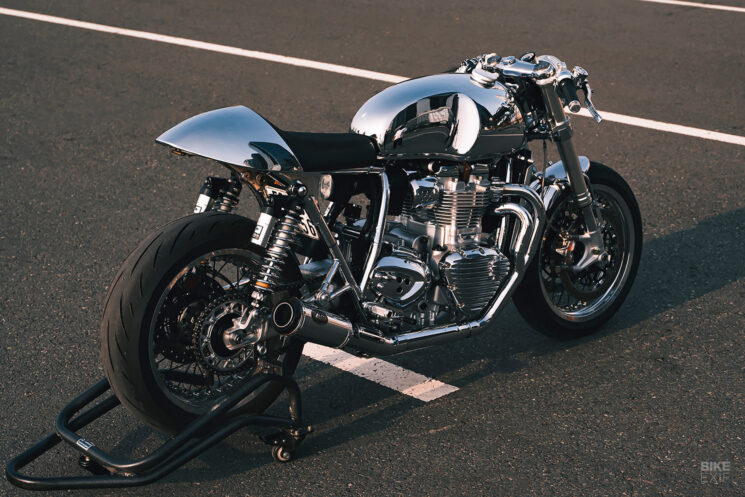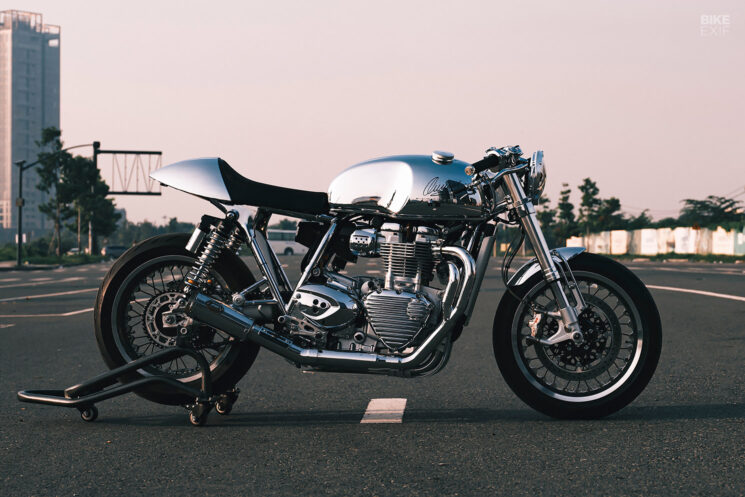
Building a custom motorcycle that loosely resembles a café racer is easy enough. But building a café racer where every part harmonizes with the next—and the finished product is actually rideable—is easier said than done. Both of those sentiments are reflected in the story of this shiny Triumph Street Twin café racer from MFix Workshop.
The Vietnamese crew was presented with a 2016-model Triumph Street Twin that had already had some work done—but still needed a makeover. The owner had fitted the fuel tank, seat, and tail cover from a Triumph Thruxton 1200 R, plus clip-ons and different forks. But the whole thing felt a bit off.
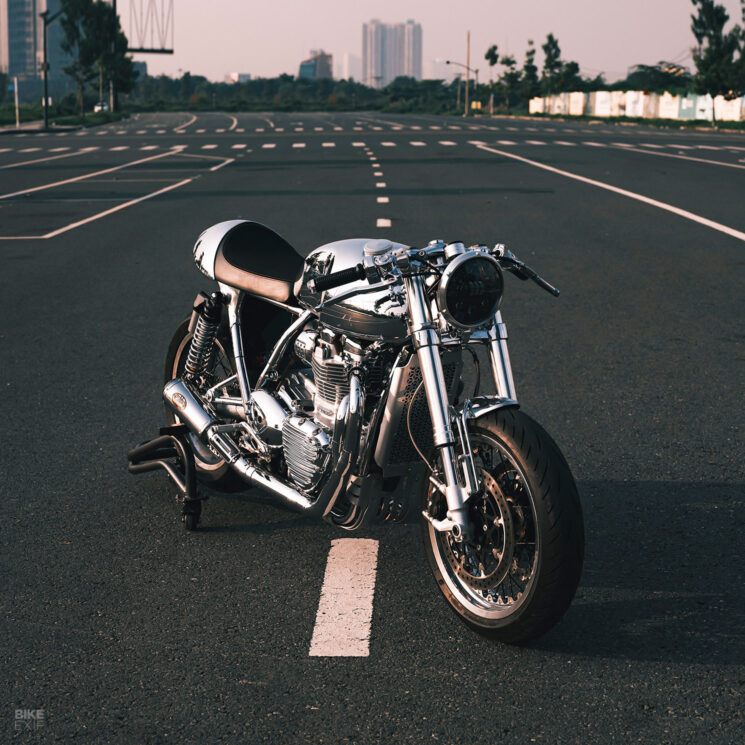
“Everything seemed to be slapped on just because the bolts would fit,” says our contact at MFix, Giang Nguyen. “The stance of the bike was pitched so far forward, that the owner struggled to keep himself from getting thrown off every time the front brake was pulled and needed a massage after every commune.”
“To say that he was frustrated with the bike would have been an understatement. It wasn’t a question of trying; we had to make it work, or the bike would have been sold. We salvaged what he had already done to the bike, improved it, and, most importantly, made it functional.”
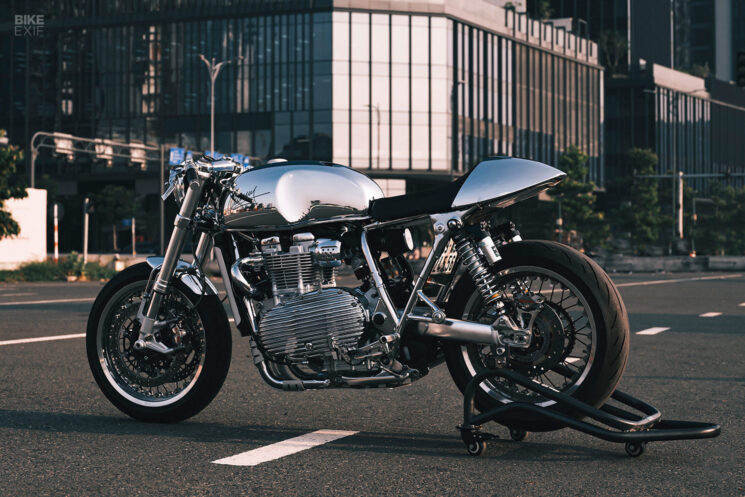
Giang is quick to admit that MFix had a head start with the build. Since the Thruxton bodywork was a good fit for the Street Twin—and since it had cost a pretty penny—it stayed on. But the workshop still had their work cut out for them.
At the top of their list was fixing the bike’s geometry. “We believe that a proper café racer shouldn’t require a visit to a chiropractor every other day,” Giang quips. “So the first thing we did was readjust the stance to fix the horizontal line of the whole bike.”
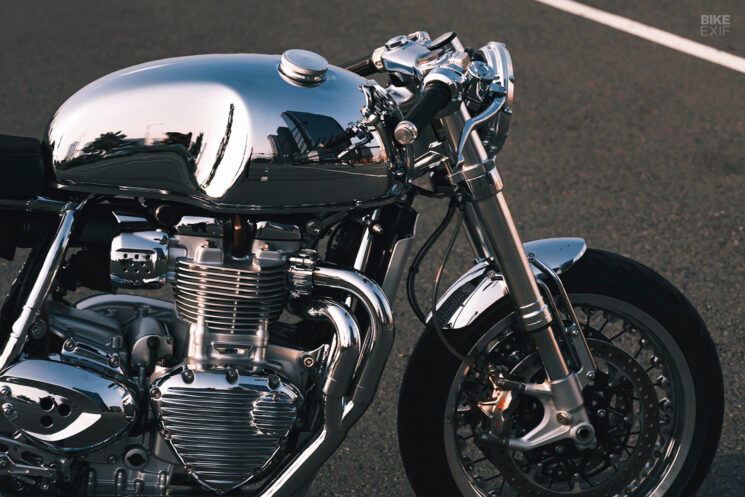
MFix slid a set of adjustable Showa forks into the yokes. Ironically, the new forks came from a Triumph Thruxton R too, as did the aluminum swingarm. A set of Nitron rear shocks connect the swingarm to the revised upper shock mounts.
The Street Twin now rolls on a tasty set of Kineo wheels, wrapped in Bridgestone Battlax Hypersport S22 tires. Burly nickel-plated Brembo Niken calipers do duty at both ends, with twin discs up front.
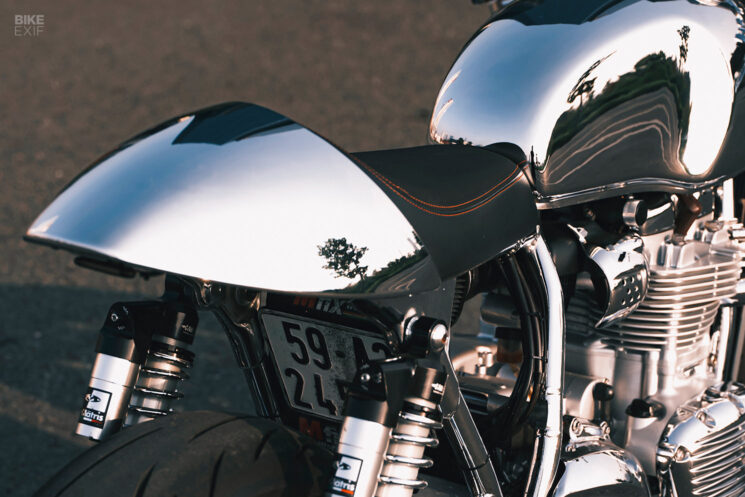
As MFix was tearing the bike down to send the frame off for a fresh coat of paint, the owner hit them with a request that would dictate the creative direction of the project. “He asked, ‘How much chrome plating could we add to the bike?’,” says Giang. “From then on, we set out to give it a new livery.”
“I think we’ll probably get a lot of heat from the community for this much chrome. But for us it was a question of how far we could go with the chrome without making it look absurd—and also before the local chopper club started inviting us to their hangouts.”
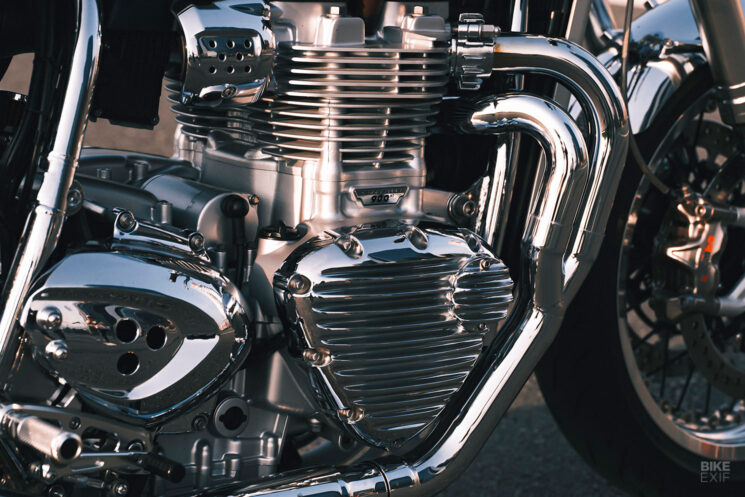
The engine was dismantled, and its aftermarket ribbed covers were sent away for chrome plating. MFix wanted to add at least some variation to the bike’s textures, so they had the rest of the engine sandblasted to a matte finish. A similar trick was used on the forks; the uppers were chrome-plated, while the bottom bits were painted silver.
“The idea was to reverse the usual usage of chrome on parts that should be highlighted,” explains Giang. “I guess we could say that chrome is the new black. So for the rest of the bike, we took apart anything we could to recolor it based on that motif.”
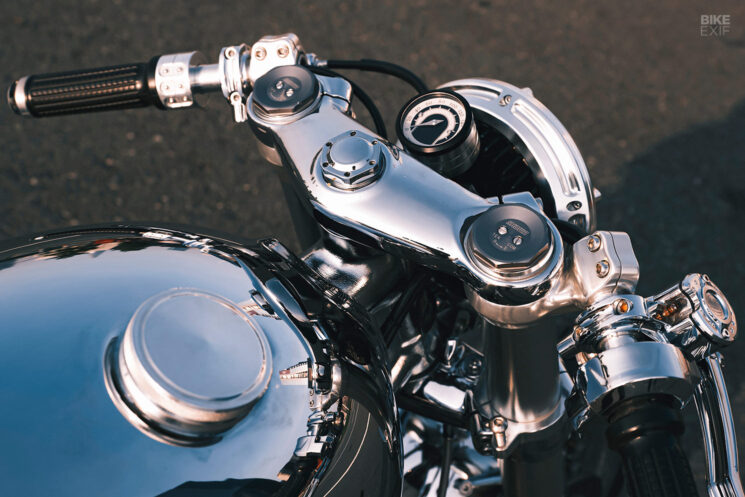
Moving to the cockpit, MFix picked chromed brake and clutch assemblies from Roland Sands Design, and predominantly silver Motogadget components that include the switches, bar-end turn signals, and tiny speedo. Black Motogadget grips offer at least some contrast.
The frame and bodywork were all chrome-plated too, naturally. Finishing touches include an LED headlight, a custom-made radiator guard, a new bash plate, and a chromed-out two-into-one exhaust system from Zard.
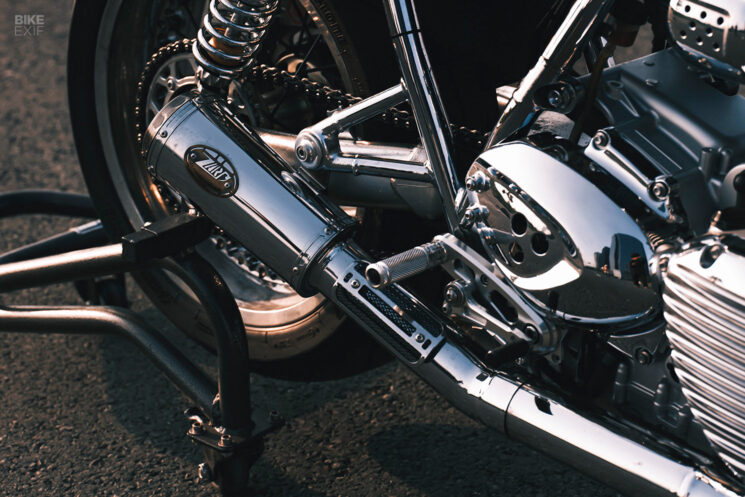
Retina-searing finishes aside, Giang adds that while this Triumph Street Twin café racer might not be MFix’s wildest custom to date, it was still a massively rewarding project. “We thought it would be a cool story to share if someone out there is also frustrated with their build,” he adds.
“Owning and customizing a bike should be fun. It’s all in the journey, and sometimes visiting a professional will help you reach the destination.”
MFix Workshop on Facebook | Instagram
